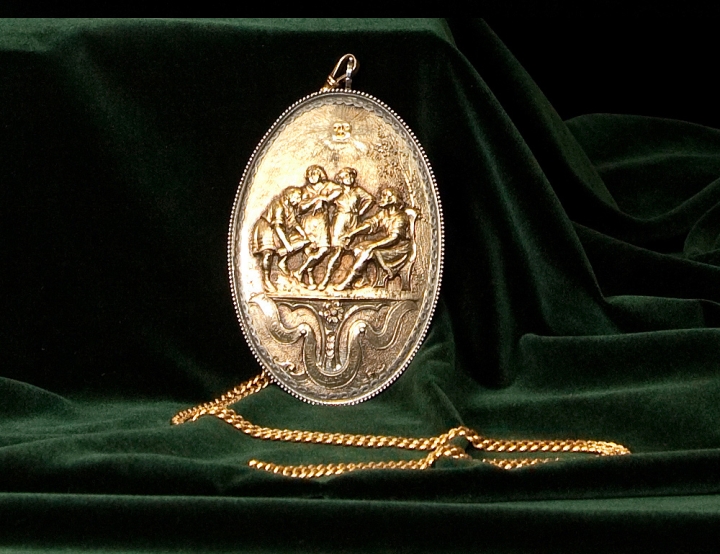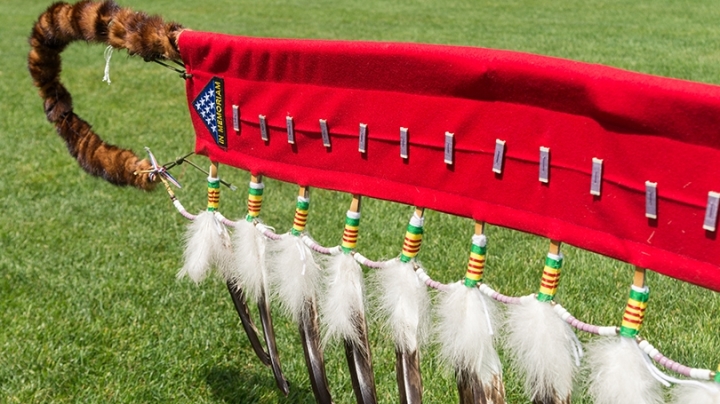About the Artifacts
The Flude Medal
When in academic attire, Dartmouth’s president wears the Flude Medal suspended from a gold chain. The medal was a gift to Dartmouth’s second president, John Wheelock, from John Flude of London in 1785. On its slightly convex face the medal depicts in gold the Aesop’s fable scene, The Old Man and His Sons. The reverse side, of sterling silver, has a heraldic shield that represents the earliest official flag of the United States of America and engraved dedicatory text.

The Charter
The Charter of Incorporation of Dartmouth College was signed on Dec. 13, 1769, by Royal Governor of New Hampshire John Wentworth, acting on behalf of the sovereign, King George III. Several thousand words in length, the document comprises two large sheets of parchment.

Lord Dartmouth’s Cup
Lord Dartmouth’s Cup is a standing vessel of sterling silver, measuring slightly more than 2 feet in height. The cup is borne ceremoniously by the College Usher in escorting members of the Board of Trustees at Commencements, Inaugurations, and other appropriate academic occasions. Crown Jeweler Robert Garrard Jr. crafted the cup in London in 1848. The fourth Earl of Dartmouth acquired the cup and was subsequently held by succeeding earls until 1969 when the ninth Earl presented it to Dartmouth during the bicentennial.

Eagle Staff
The staff was created by Trudell Guerue ’74, a Vietnam veteran and Sicangu Lakota who came to Dartmouth after serving in the Army Airborne. He created the staff to honor 21 Dartmouth men who died in the Vietnam War.
Guerue, who was wounded in combat, presented the ceremonial staff to the Native Americans at Dartmouth organization, and it has become a traditional element of the opening festivities of Dartmouth’s annual Powwow. The staff includes feathers sheathed with the Vietnam Service Ribbon and cloth featuring 21 Purple Heart ribbons.

Wampum Belt
The Wampum Belt was given to Dartmouth by the Mohegan Tribe in 2022, when Dartmouth formally repatriated the papers of Samson Occom, one of Dartmouth’s founders, to the Tribe. The hand-beaded belt symbolizes Dartmouth’s living relationship with the Tribe and its charter commitment to educating Native and Indigenous students. The belt is a reminder of the long and complicated relations between Dartmouth and the Mohegan Tribe, and with Indian Country. Its purple beads signify conflict, while its white beads signify cleansing. The belt signifies a promise to honor our commitment to the Tribe and the Indigenous peoples of this land.
